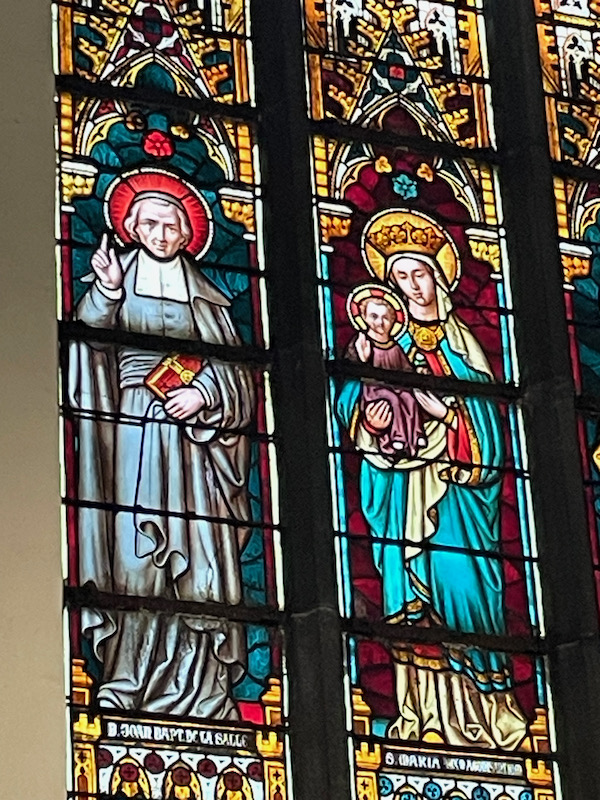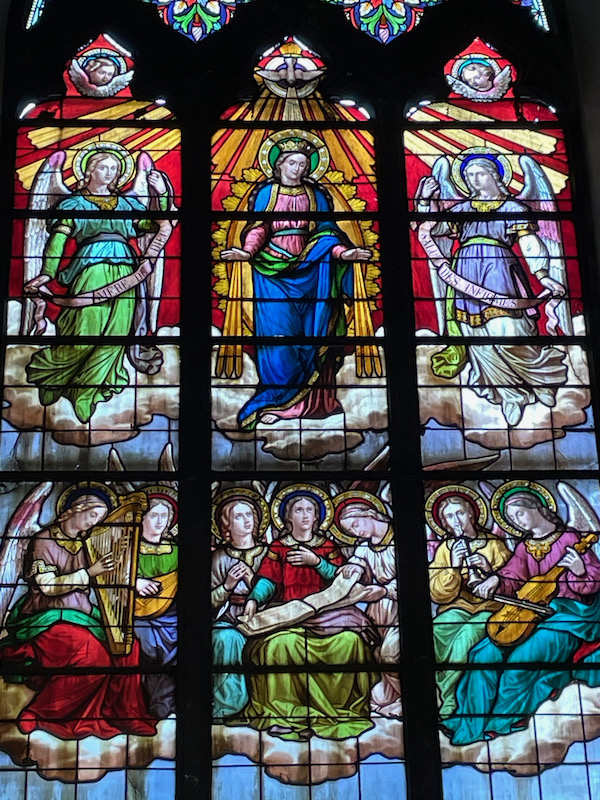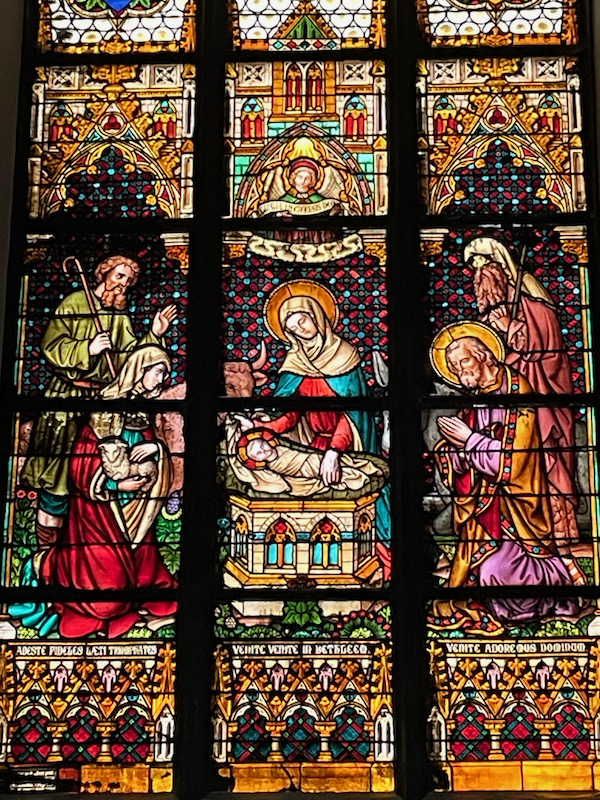Our Blog - Summer 2024 Trip - Mons, Belgium
I think I mentioned that there are both French-speaking and Flemish-speaking regions in Belgium. Mons is in the French-speaking region and is a good size, about 100K people in the city itself. The first signs of activity were some flint tools that were dated to the Neolithic period. When Julius Caesar arrived in the region in the 1st century BC, the region was settled by the Nervii, a Belgian tribe. A Roman castrum was built, giving the settlement its Latin name Castrilocus. The name was later changed into Montes for the mountain on which the castrum was built, which then got changed eventually to Mons.
Similar to Ath, to the north-west, it was made a fortified city in the 12th century. The population grew quickly with grand buildings being build around the Grand-Place. It was further fortified by King William I of the Netherlands in the 19th century. When Belgium gained its independence in 1830, the decision was made to dismantle the fortifications around several cities, including Mons, Charleroi, and Namur. The actual removal of fortifications only happened in the 1860s, allowing the creation of large boulevards and other urban projects.
The Grand-Place is the center of the old city. It is purely pedestrian within the square itself and there are lots of flowers and an area with water jets.
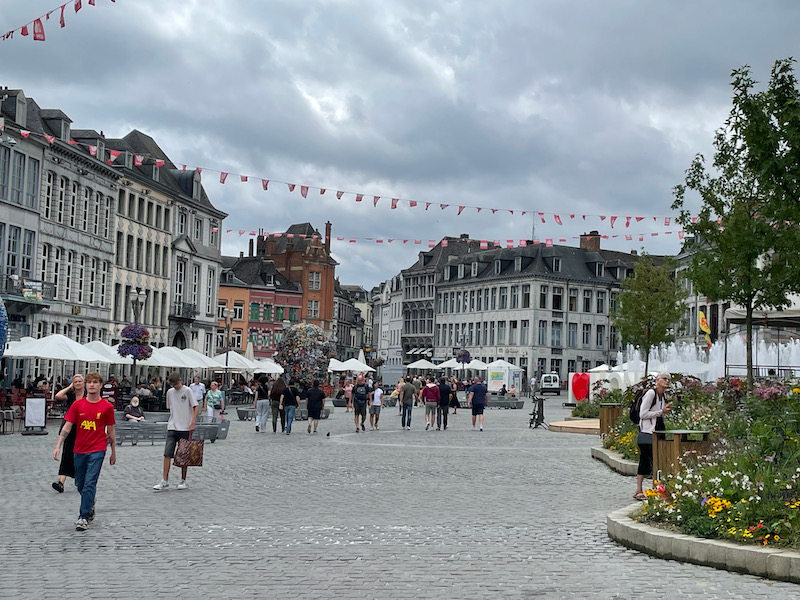
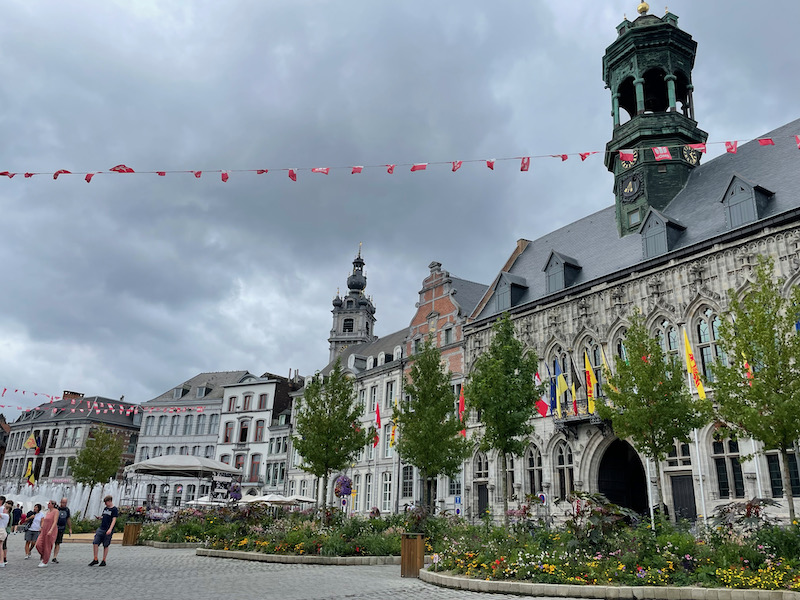
On one side of the Grand Place is the Hôtel de Ville. There was an older town hall nearby but in 1323, Count William I decided to build a new town hall (at that time called the House of Peace). This building lasted until 1477 when a nearby shop exploded, destroying the building. It was rebuilt to roughly what you see today. The Renaissance bell tower was added in the 18th century although the bell itself dates from 1390. The door handle is quite unique ...
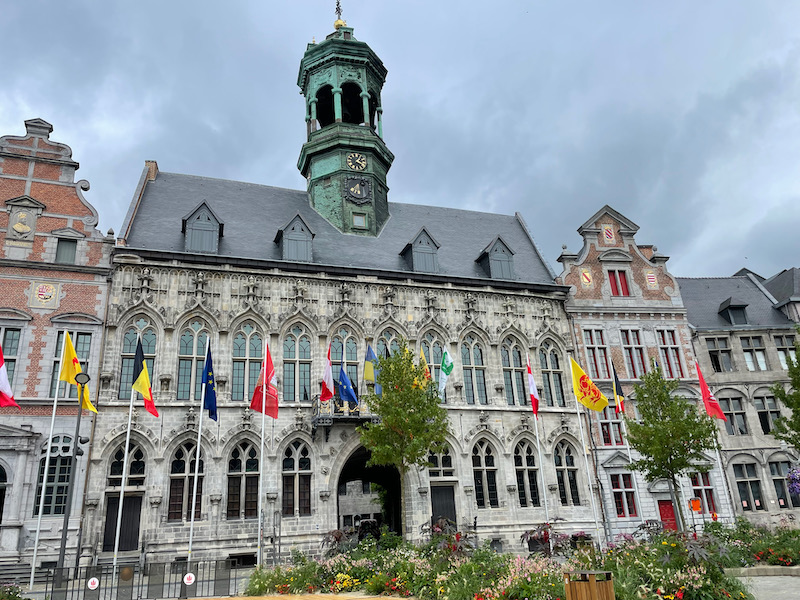
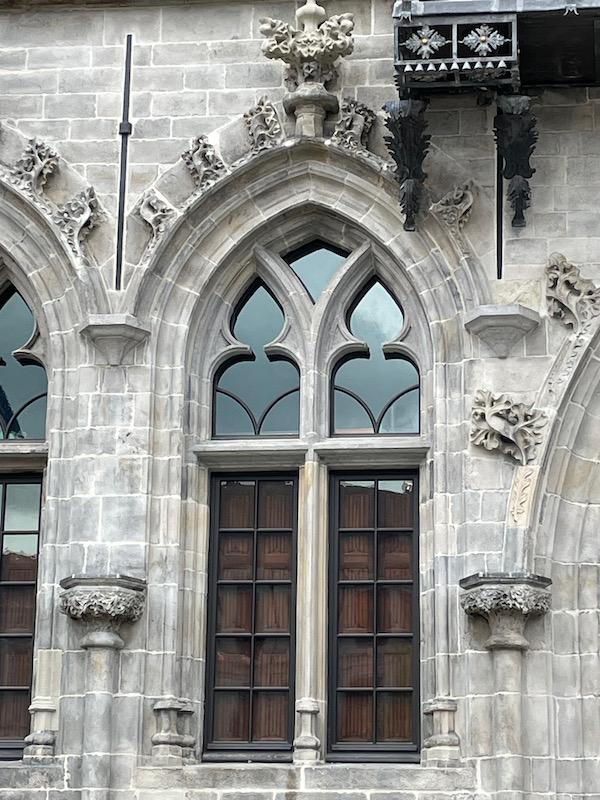
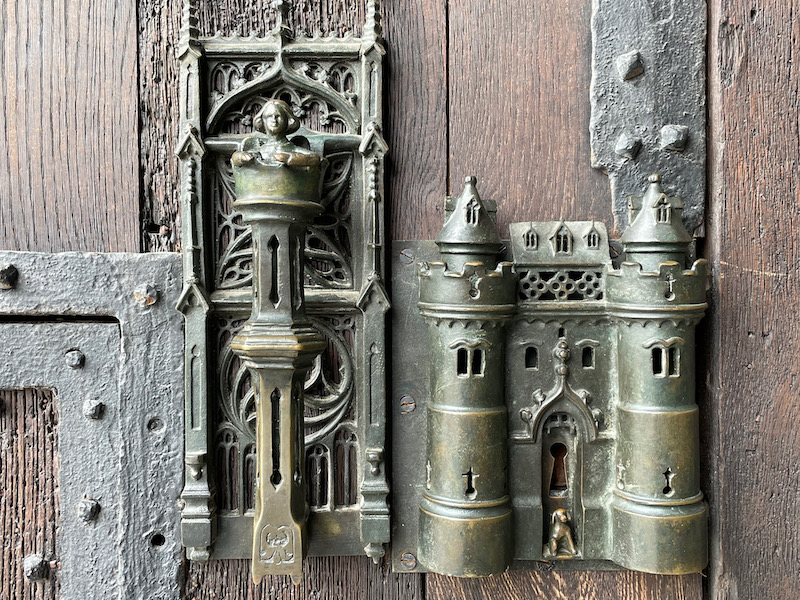
We actually had to look a bit for this as we expected it to be a bit ... well ... bigger. This is Le Singe du Grand Garde, a small wrought iron statue of a monkey. Its origin is not really known, but it dates back several centuries. Some historians claim that it was placed there to bring good luck to the city and its inhabitants. Nowadays, tradition dictates that whoever passes in front of the monkey must stroke its head with their left hand to make a wish come true. We can notice in the photo that the monkey's head no longer has the same color as the rest of its body and that it appears worn.
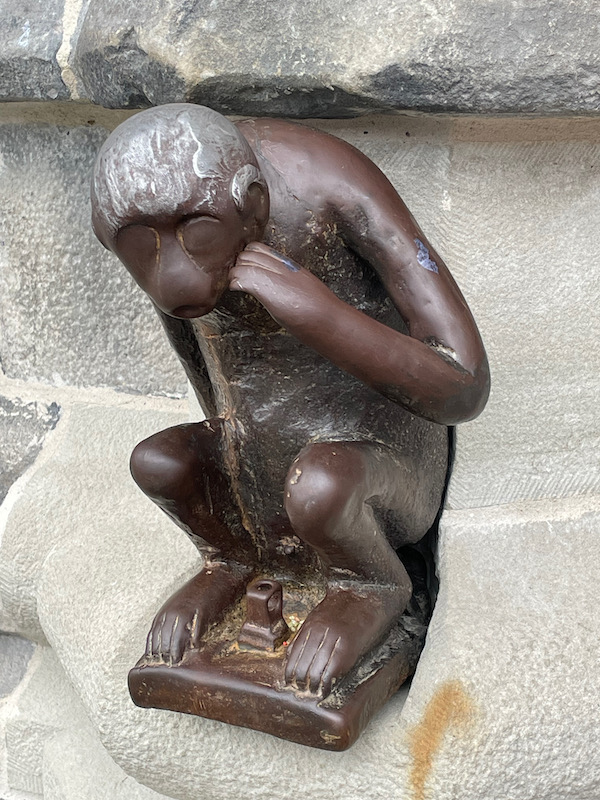
The 15th-century Collégiale Sainte-Waudru church was built in what they call Brabantine Gothic architecture. It is a classical Latin-cross form and the choir has 15 chapels.
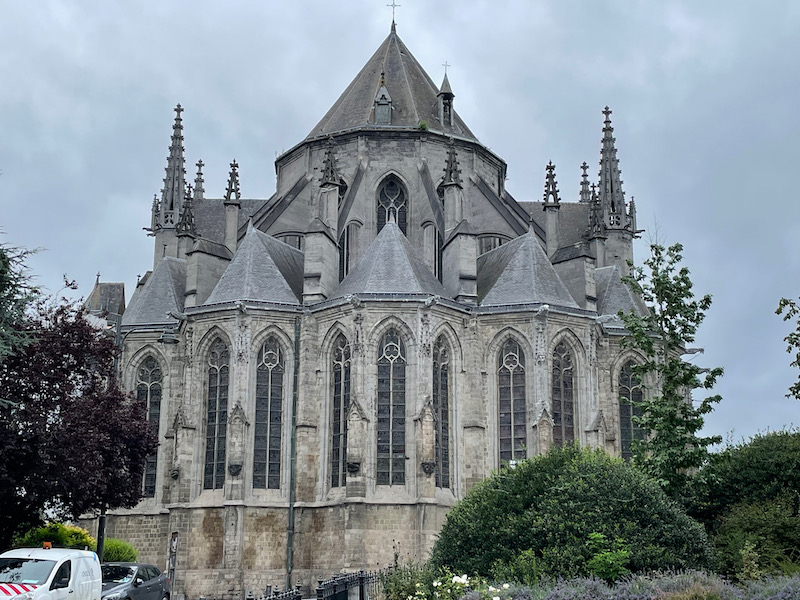
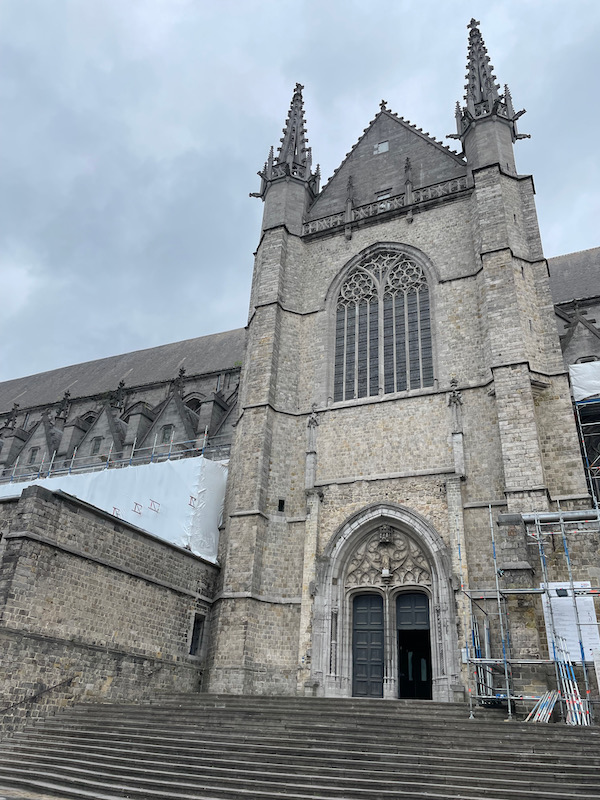
The nave itself is very typical of Gothic churches, with tall gothic arches separating the nave from the aisles, tracery on the level above the arches, and then stained-glass windows at the very top. One unique thing here is that the ceiling is brick.
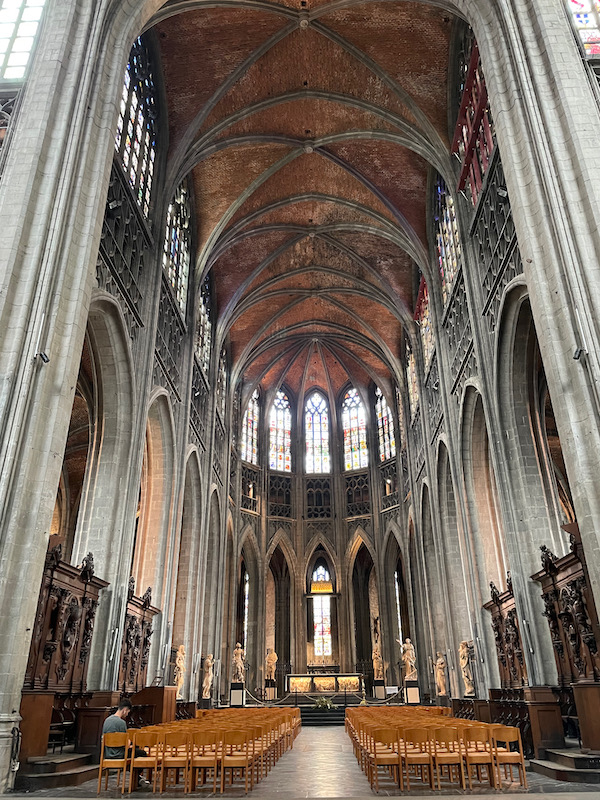
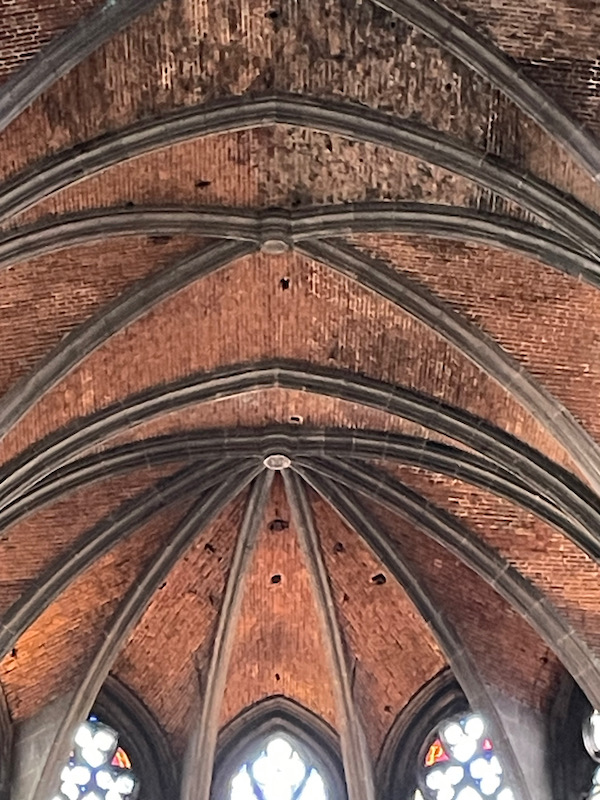
I had never heard of Jacques du Brœucq before, but he has several pieces of art in the church. He was born and died in Mons (1505-1584). In addition to being a sculptor, he was an architect who designed several castles and chateaus in Belgium. These 2 bas-reliefs from du Brœucq were part of the Renaissance-style rood screen, built from 1545-1549. It was made of black marble with sculpted alabaster bas-reliefs. When the rood screen was destroyed in 1797, a majority of these works were recovered and put in various places in the church. These two show the Flagellation (left) and the Carrying of the cross (right).
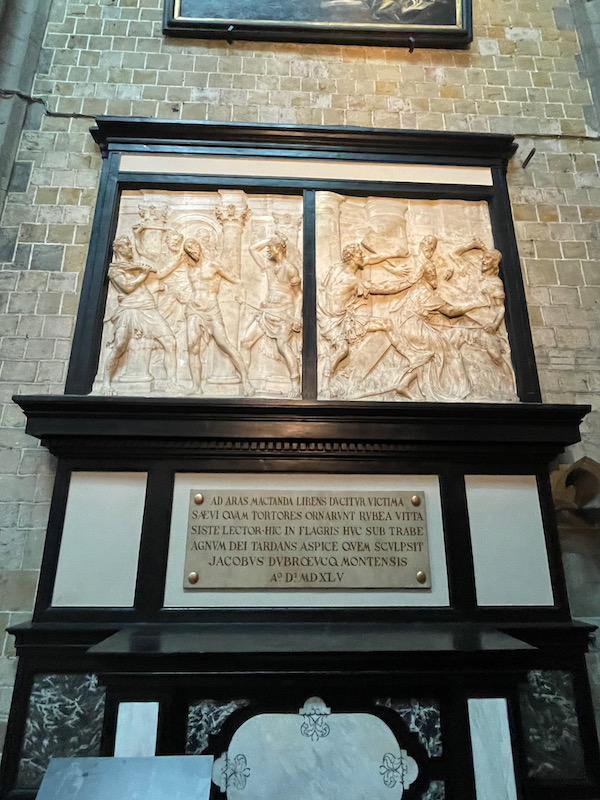
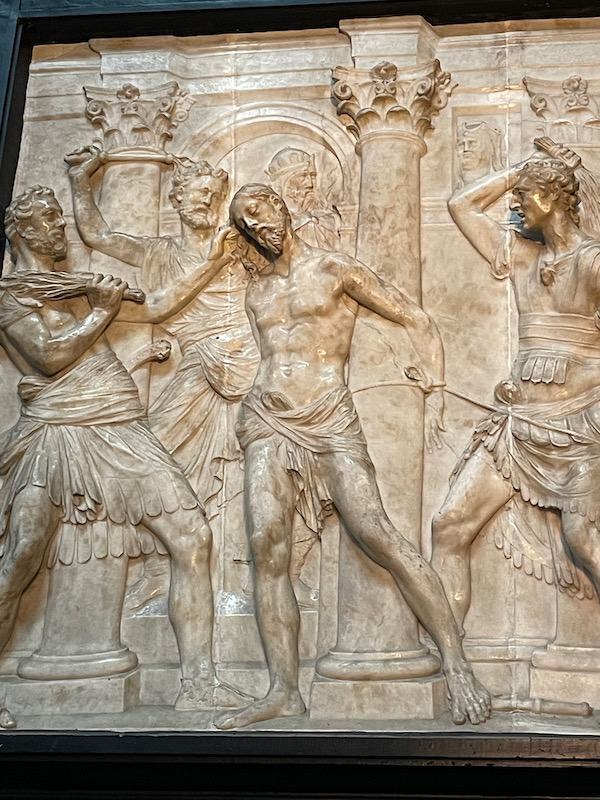
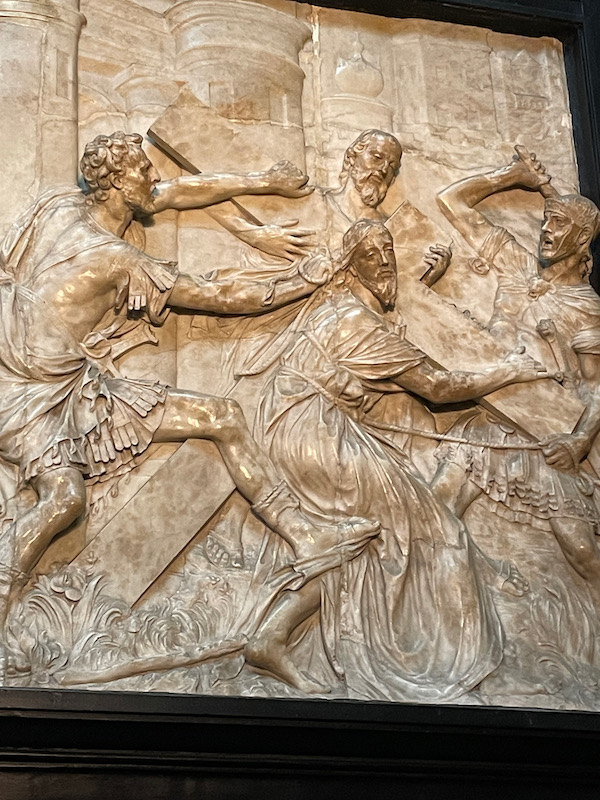
While most of the altarpieces are mostly marble and in the Baroque style, this one is very much flamboyant Gothic and carved stone.
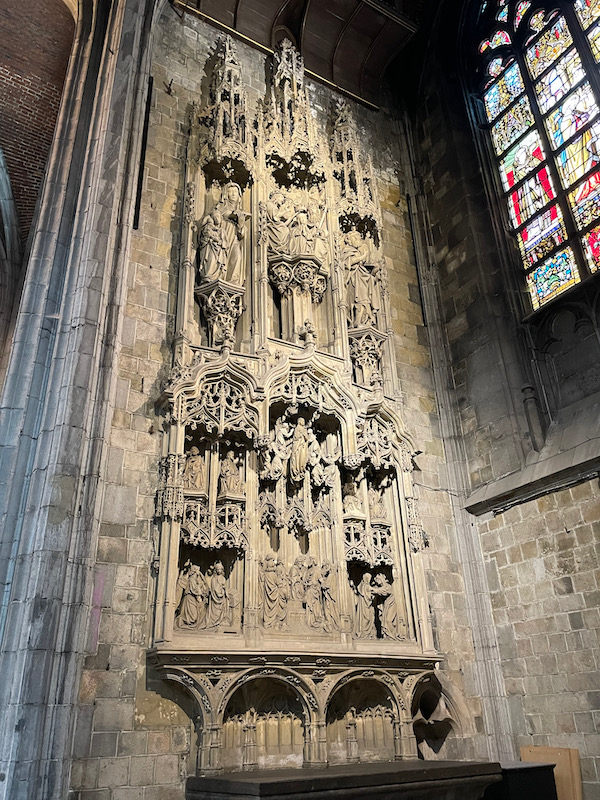
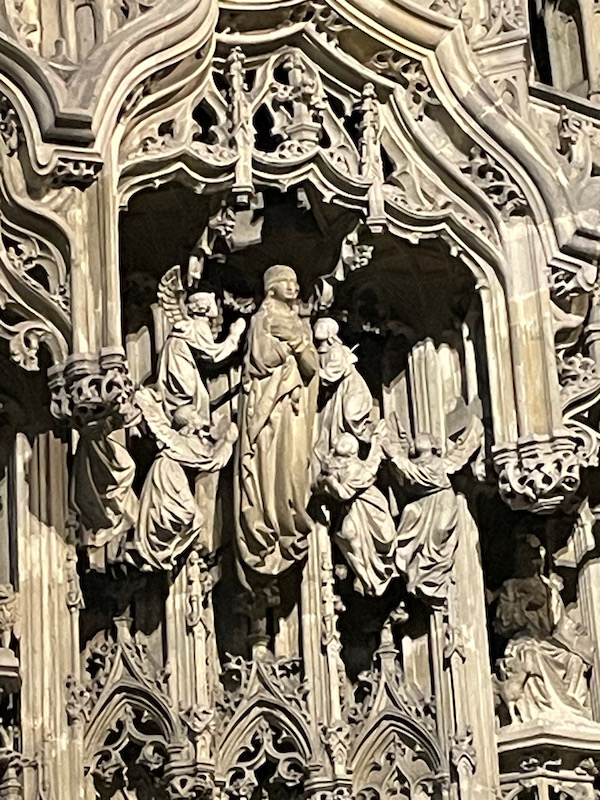
The Chapel of Saint Francis is impressive for the wood paneling that surrounds the chapel and creates frames for the paintings. They were redone in the 18th century and illustrate various periods in the life of Saint Francis.
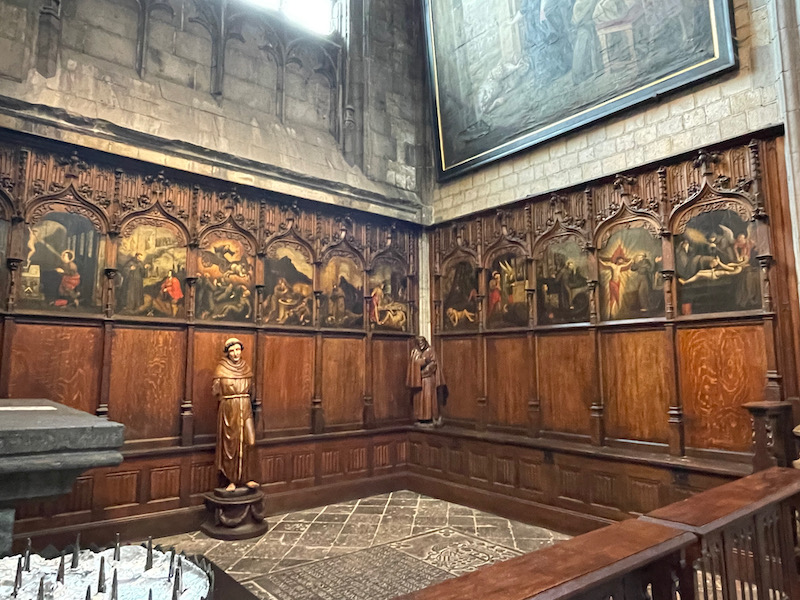
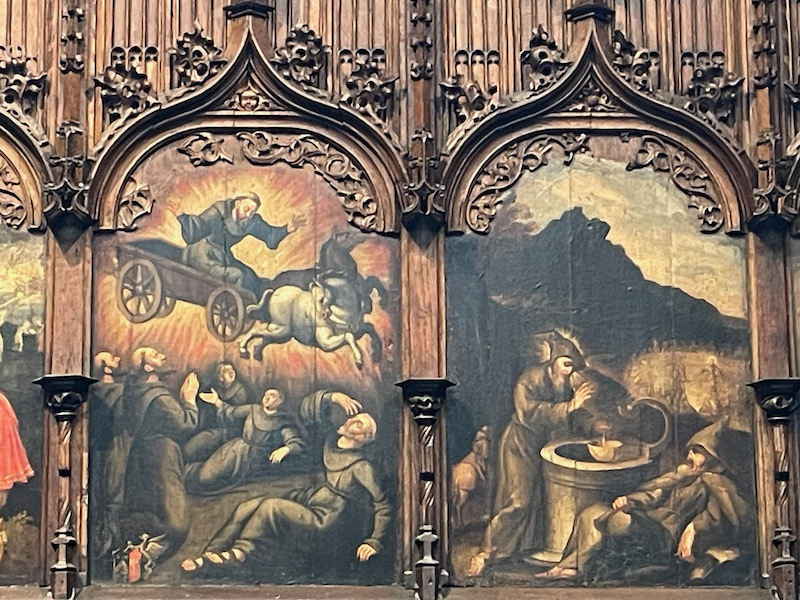
The Saint Roch altarpiece is an example of one of the Baroque style marble altarpieces. It was made in 1712 and show Saints Fabian and Felicien on either side of a 17th century painting representing Saint Roch among the plague victims.
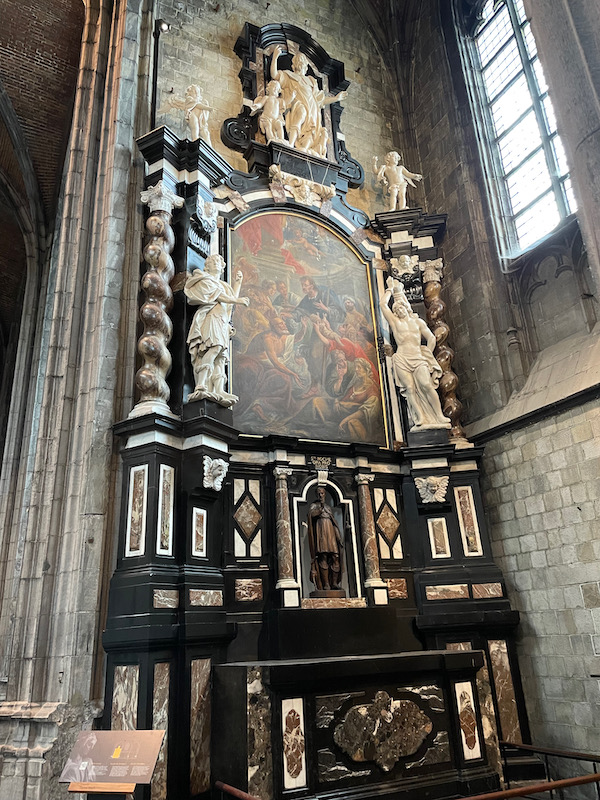
This altarpiece was commissioned by Mary of Hungary and was sculpted by Du Brœucq between 1547 and 1550. The top 2 parts represents a building under construction. The bottom 3 pieces are actually from the rood screen and (I think) the detailed picture that I have is of the betrayal by Judas in the Olive Garden.
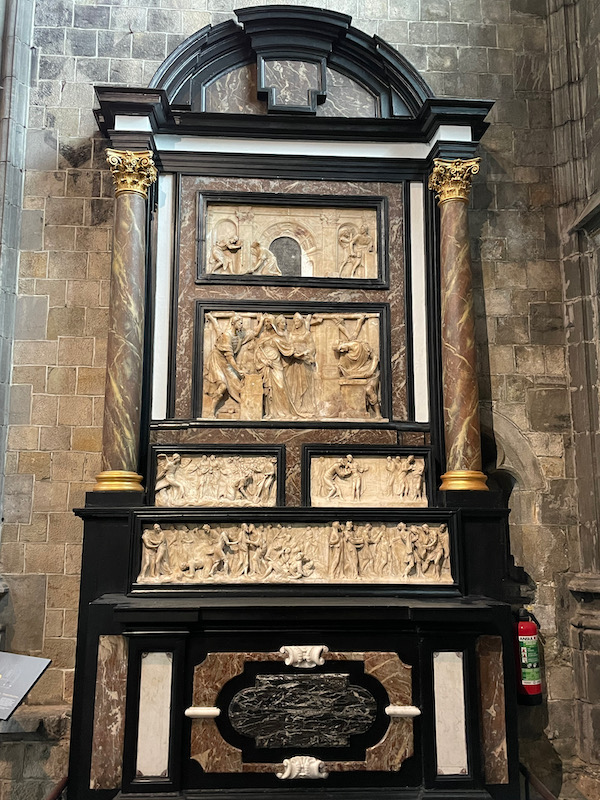
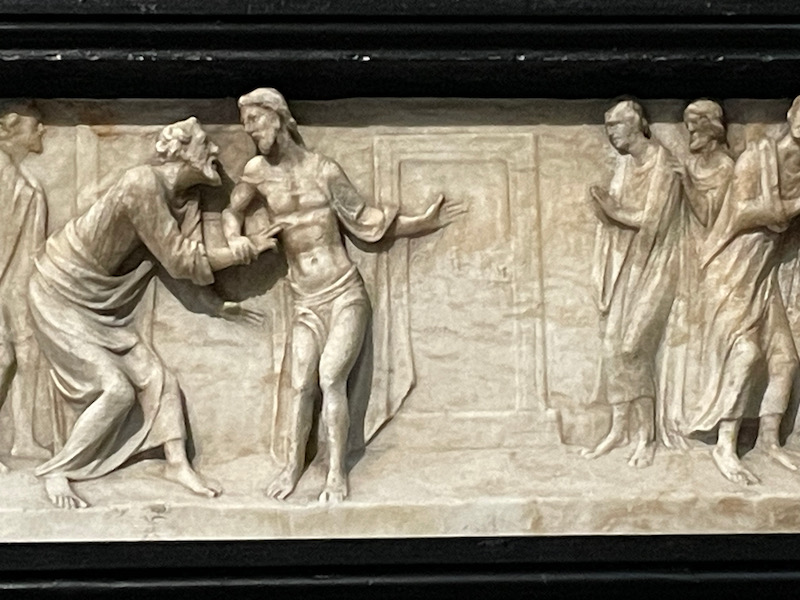
There are a set of 21 stained-glass windows in the church that date from the 16th century. There are also a set of Gothic stained-glass windows made between 1853 and 1930. Here are a few examples.
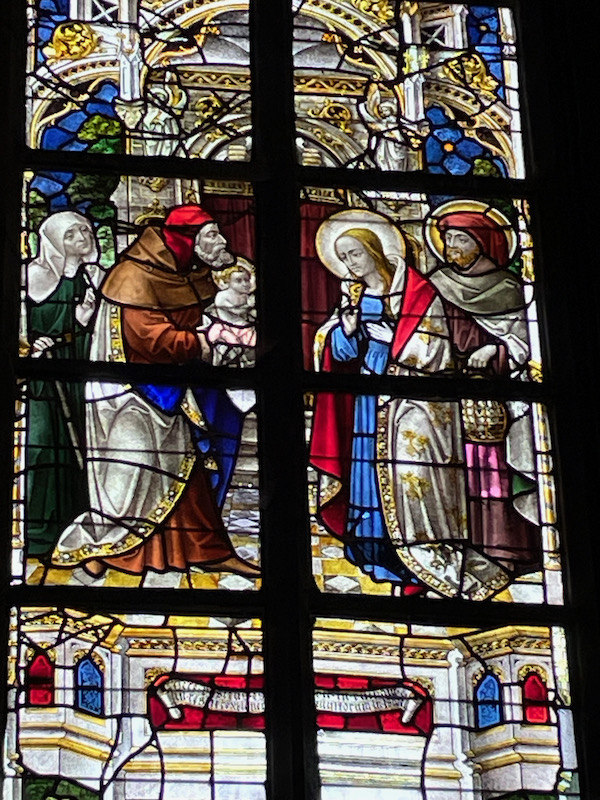
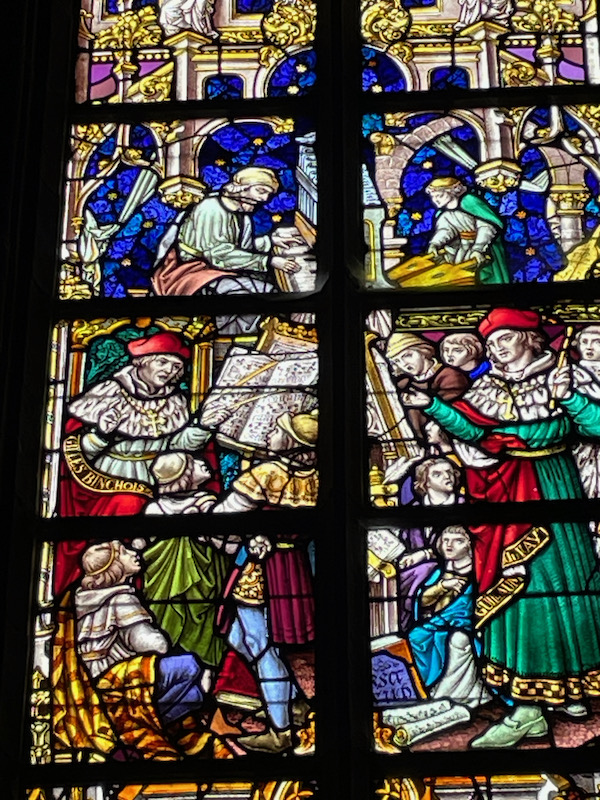
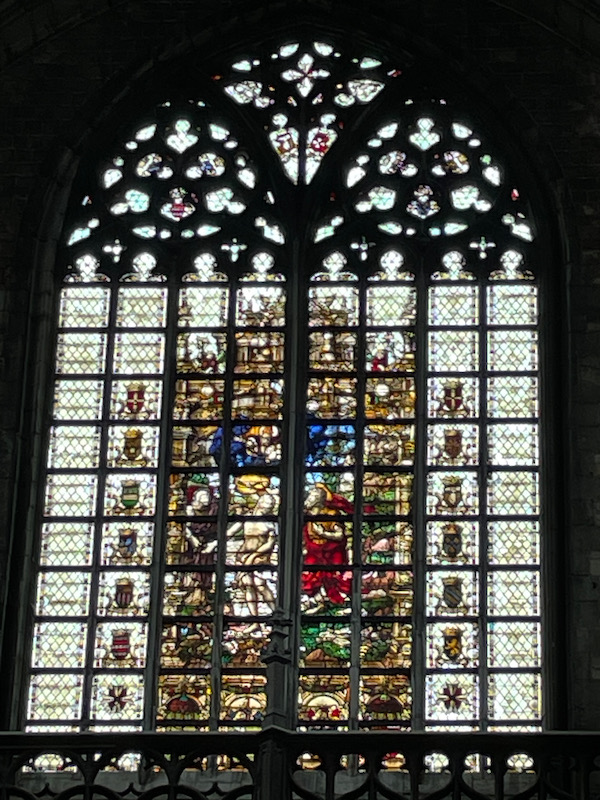
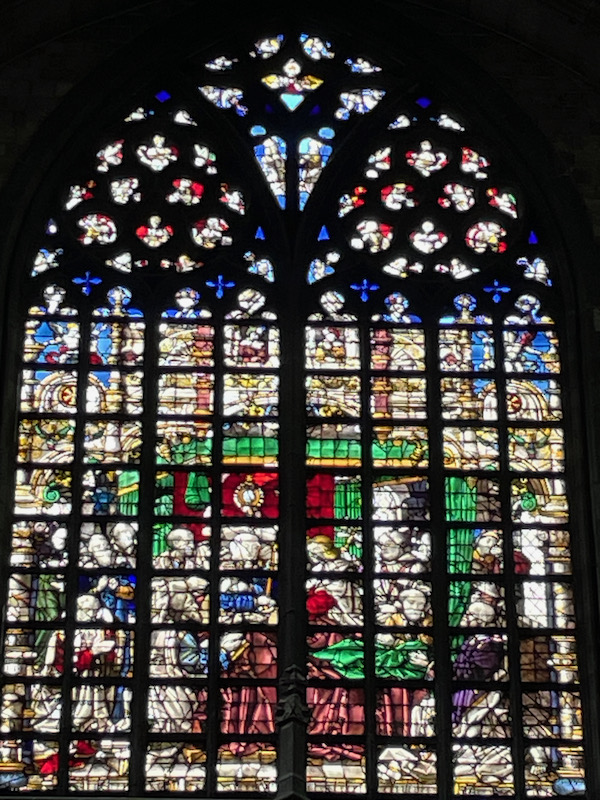
Another set of bas-reliefs from Du Brœucq, also from the rood screen and dating from 1545. These are scenes of the Passion.
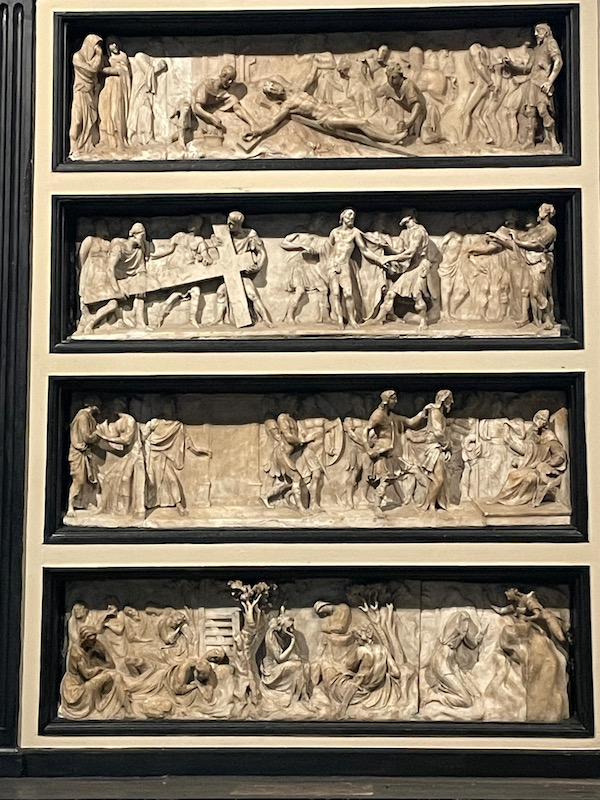
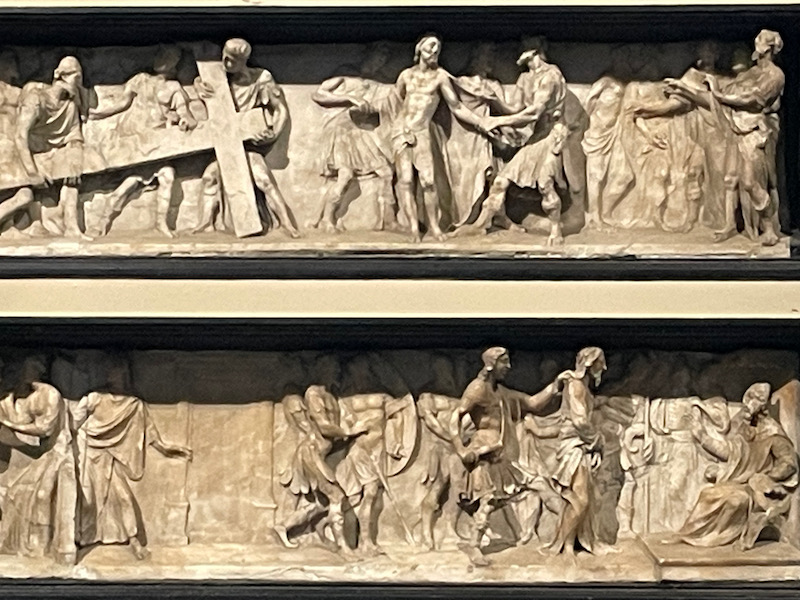
This is probably getting repetitive, but this altarpiece is also the work of Du Brœucq. Called the Saint Mary-Magdalene altarpiece, it was done in 1550 but then dismantled in 1797 and rebuilt incorporating additional fragments from the rood screen, including one that shows the Last Supper.
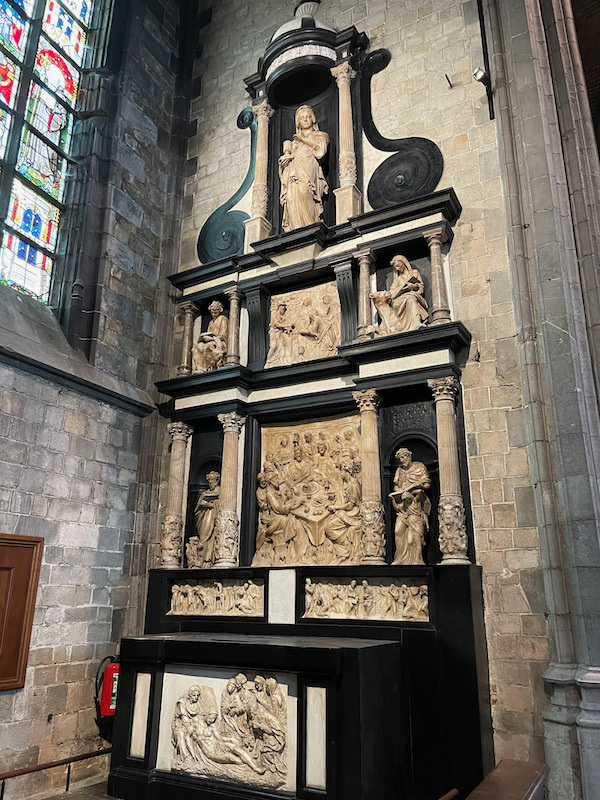
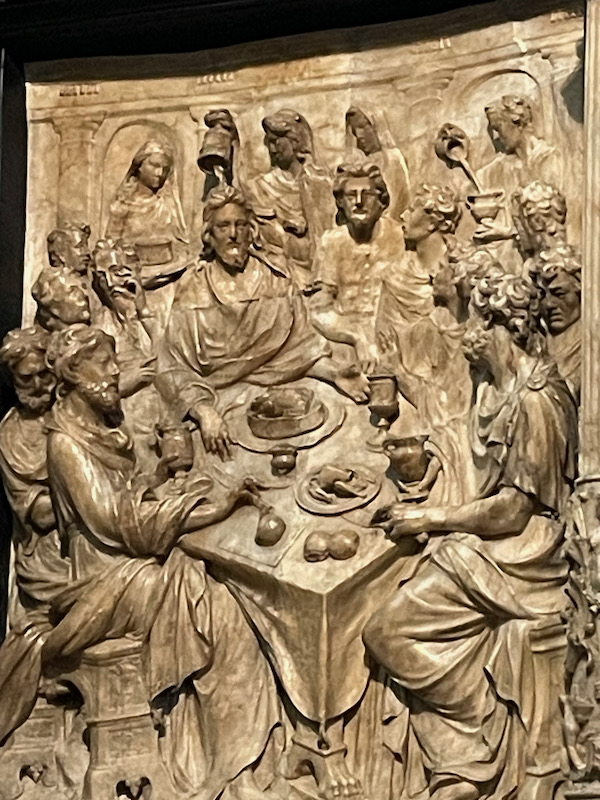
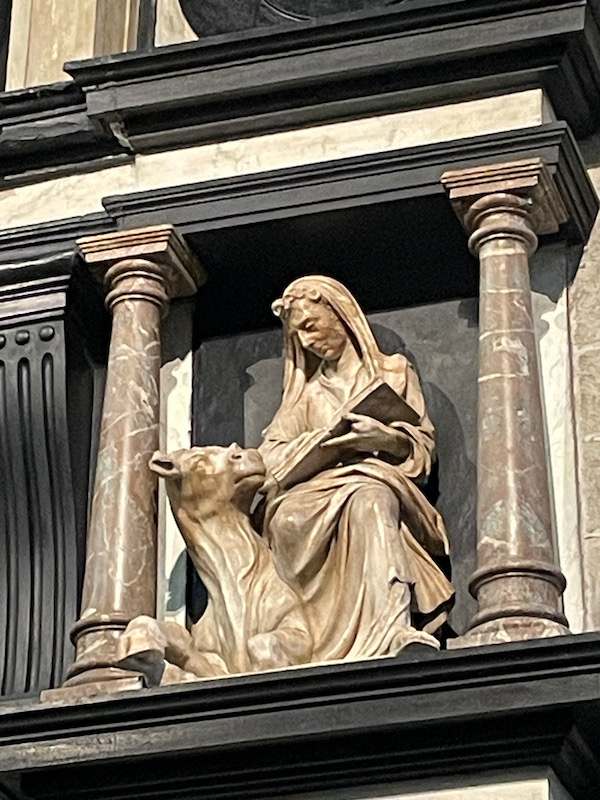
The Golden Coach is a processional chariot made of carved, painted and gilded wood from the 14th century (or in 1779, depending on which information you believe is correct) and it is the only processional chariot from this period still in use. On Trinity Sunday, the coach parades across the town with the reliquary containing the relics of Saint Waudru.
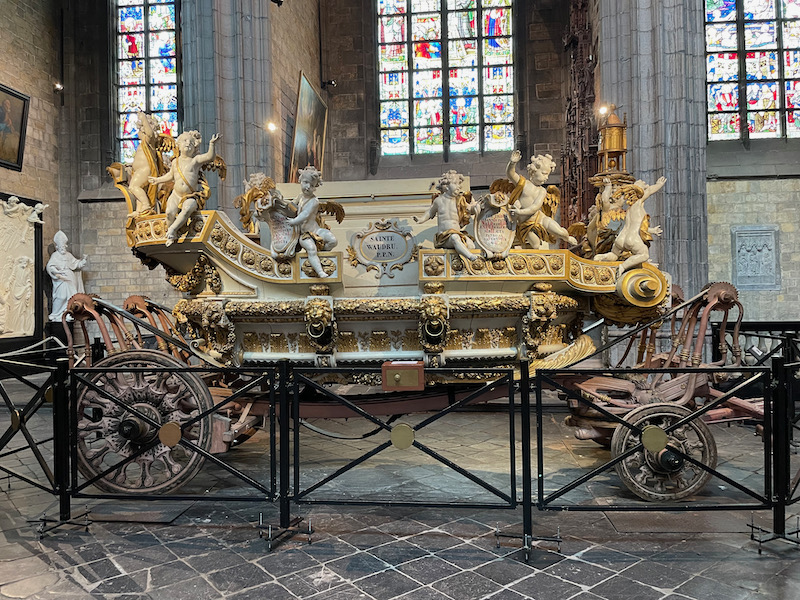
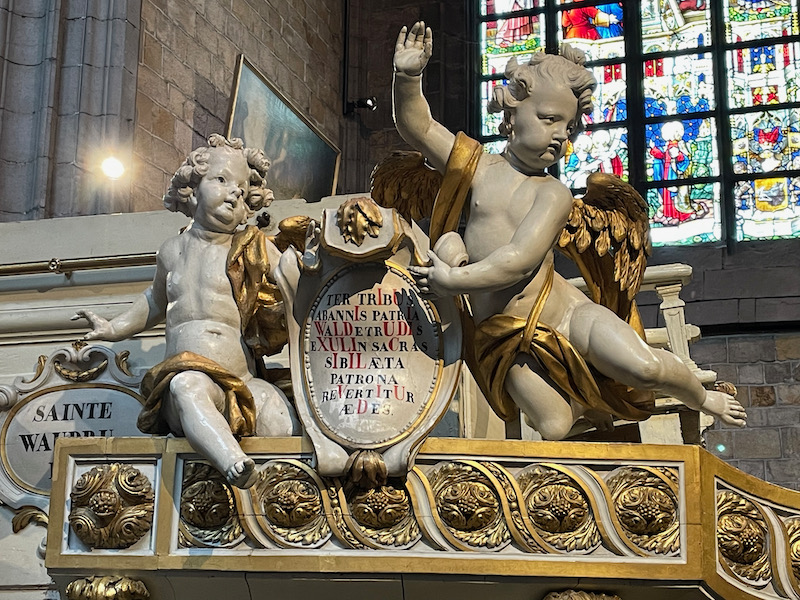
This polychrome wooden altar is dedicated to Saint-Vincent and dates from 1905. In both the carved wooden parts and the painted outer sections are scenes from the life of the saint.
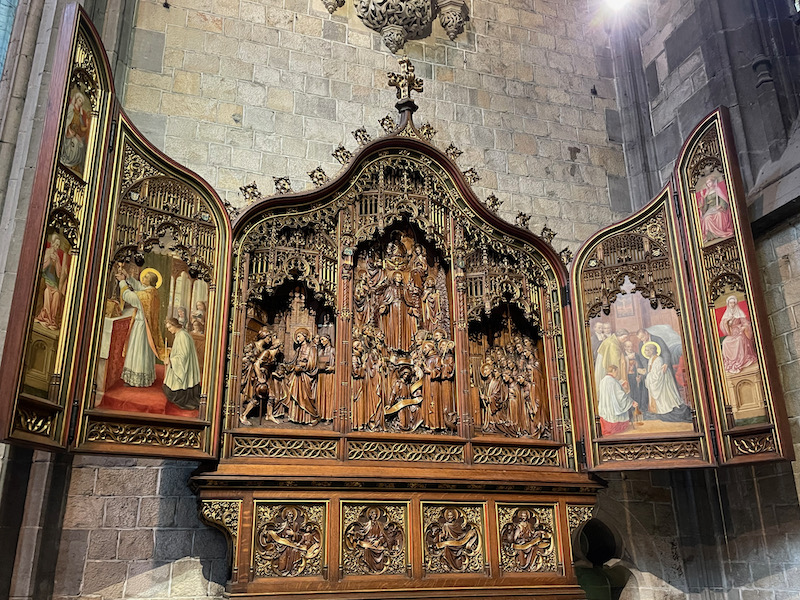
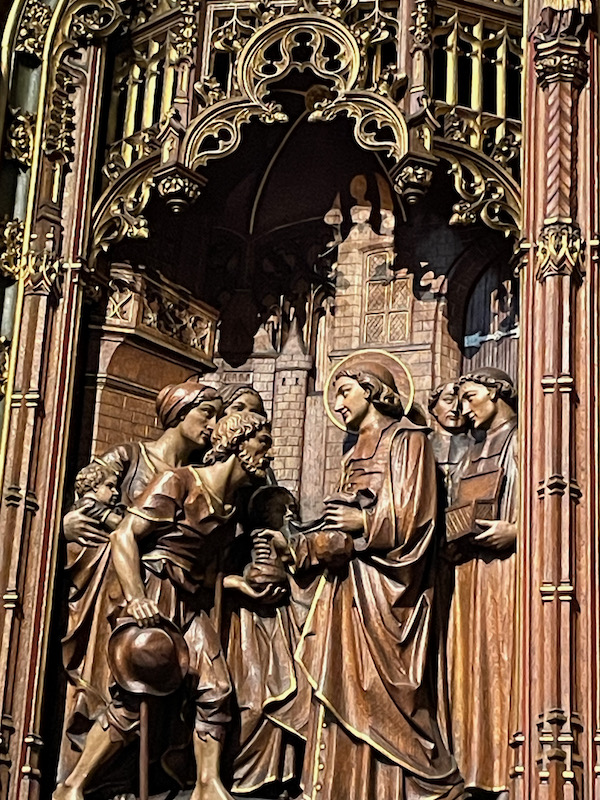
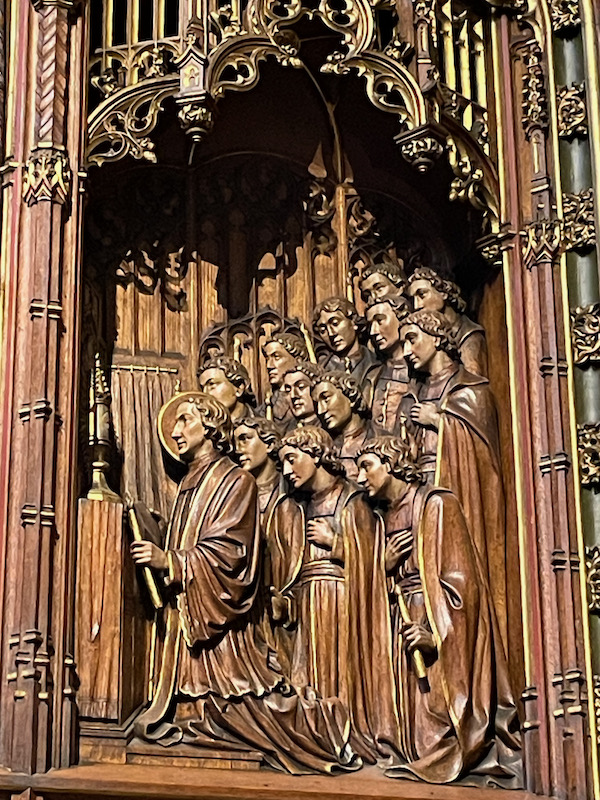
Just outside the church is one of 3 fountains that decorated the streets have survived until today, this one called the Fontaine-Pilori. Built in 1779 in Louis XVI style, it is topped with a vase decorated with laurel garlands and a banner of the coat of arms of the noble chapter of St. Waltrude.
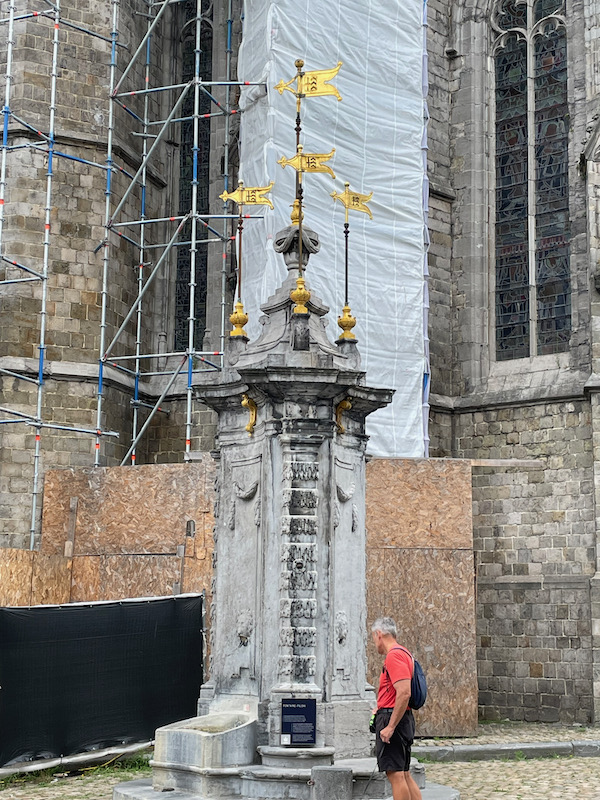
From there, we headed up to the Parc du Château, which occupies the land where the old count's castle stood. You can see the Saint-Calixte chapel, the oldest building in Mons (11th century but remodeled in the 14th).
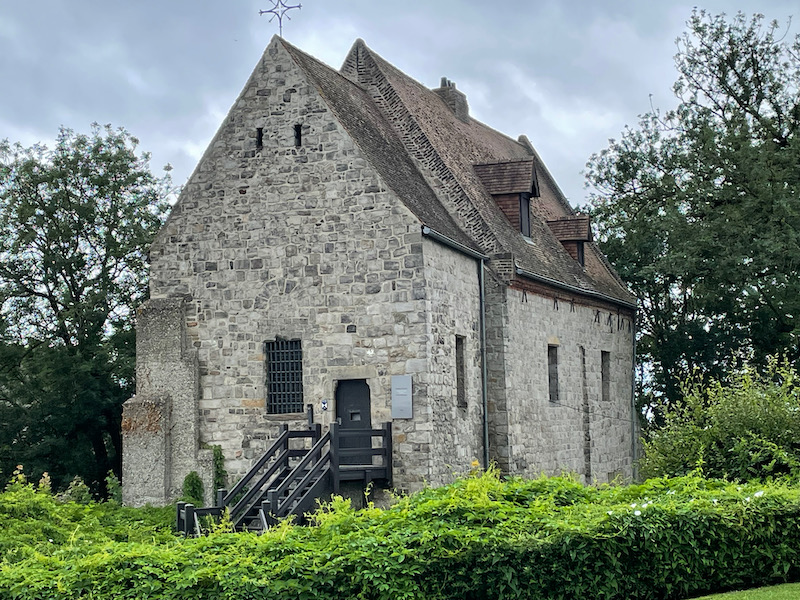
Also in the park is the 17th century Belfry. Victor Hugo described the top of the belfry in a letter to his wife as "a coffeepot flanked by 4 smaller teapots."
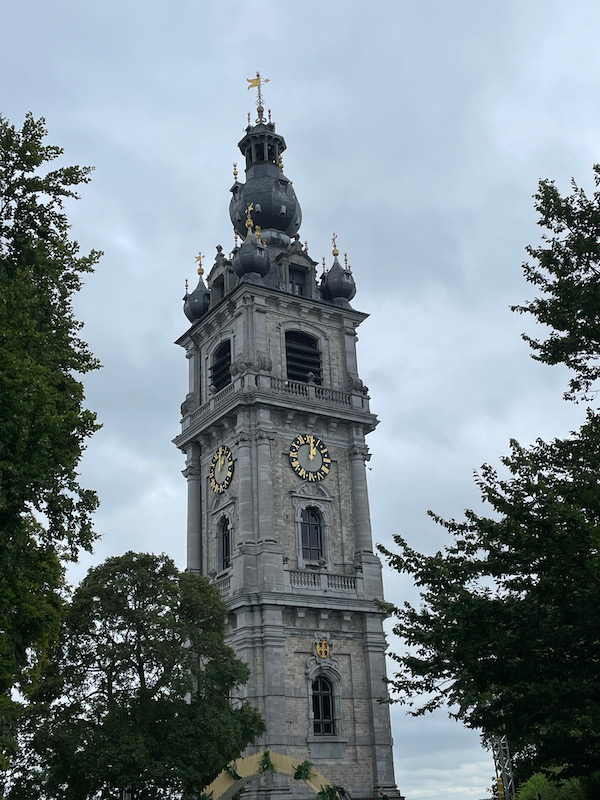
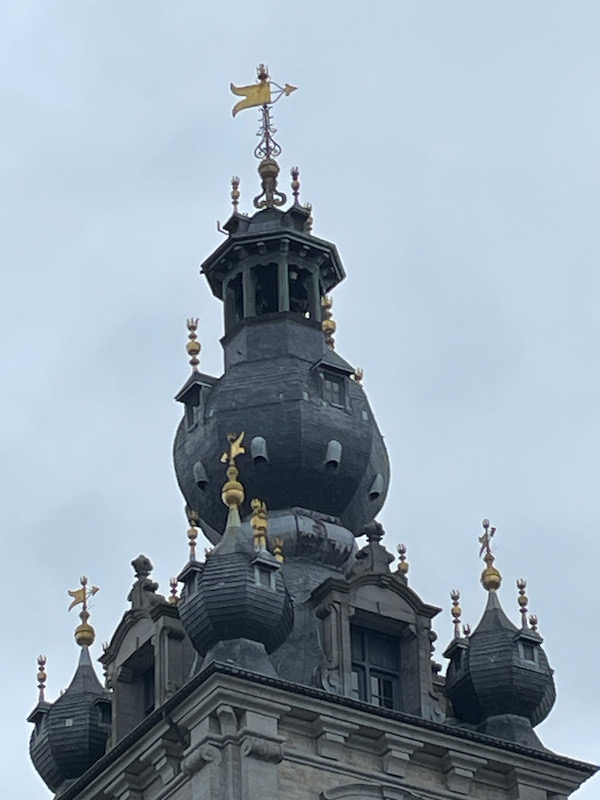
Our last stop in Mons was the Église Sainte-Élisabeth. In 1345, a private mansion was donated for a chapel dedicated to Elizabeth, Queen of Hungary. The chapel grew in importance, to the point that people wanted to make it a parish. Jealous of their privileges, the clergy of the Saint-Germain parish opposed this for a long time. Finally, in 1516, a Gothic style church was consecrated in 1588. That building was devastated by a fire in 1714 and restored. The lower part of the façade are from the original building (note the difference between the stone blocks and the bricks above). For me, this is not really a nice-looking church (sorry).
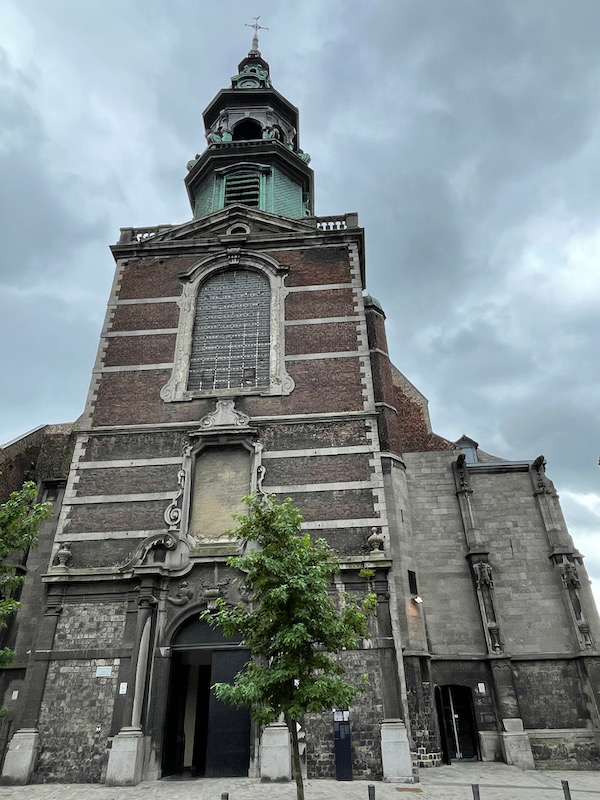
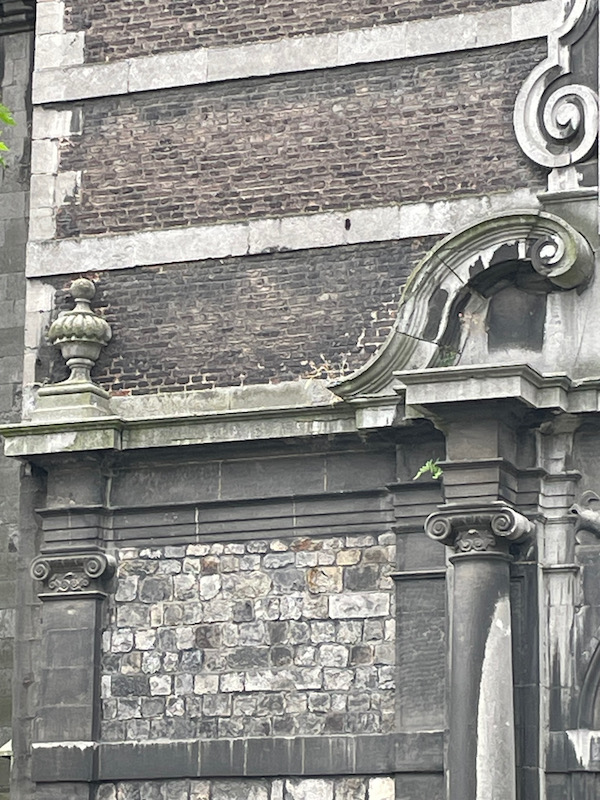
The nave is part of the 18th century restoration, and is very clean and white.

There are a few altars and statues that are interesting, and so I attempted to grab pictures of a few of the furniture in the interior.
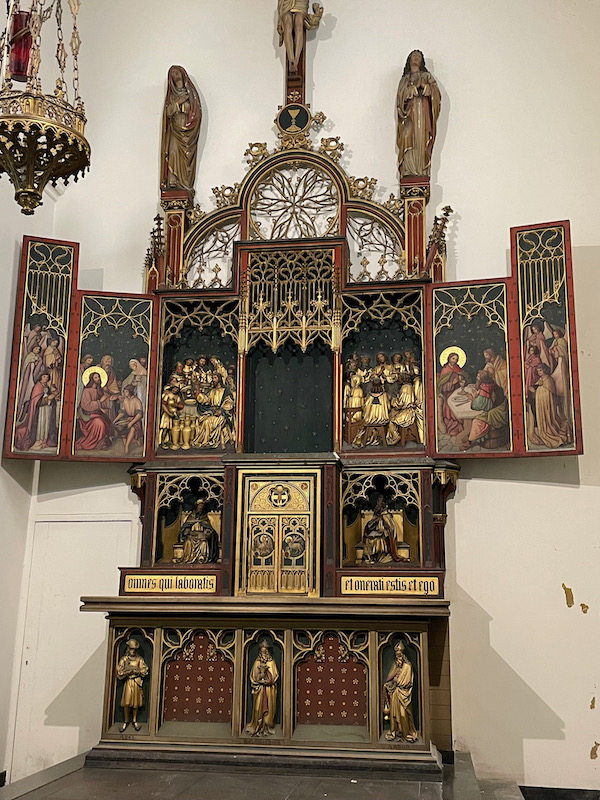
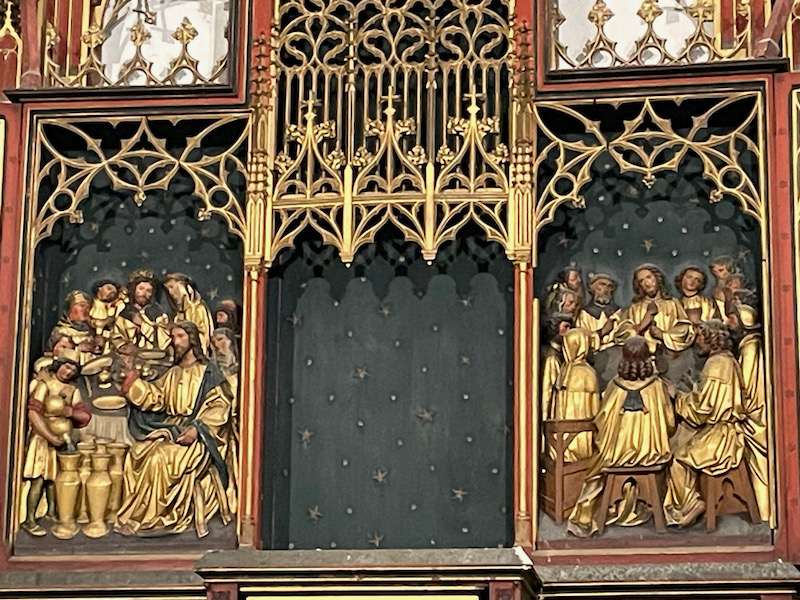
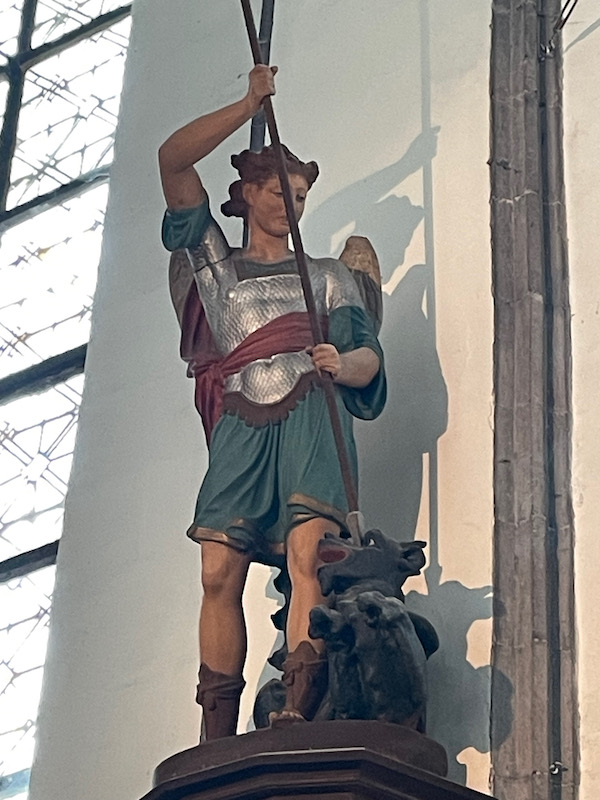
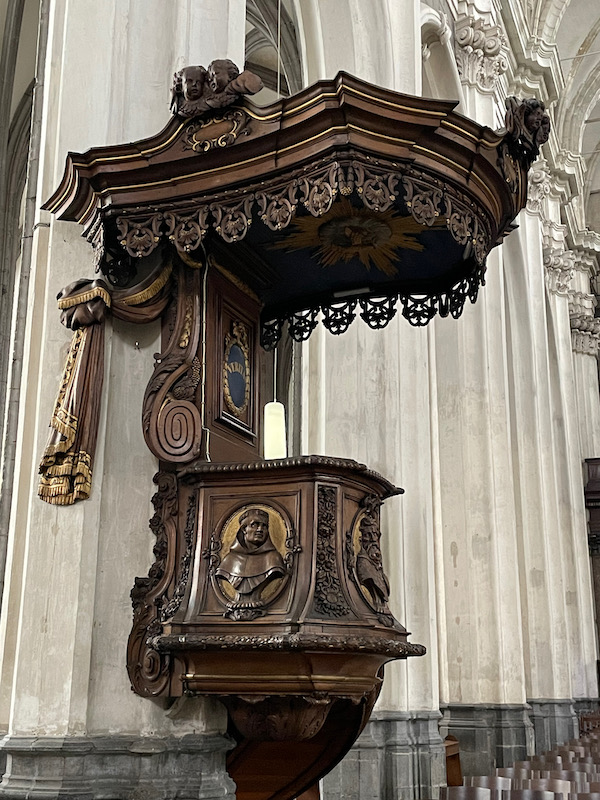
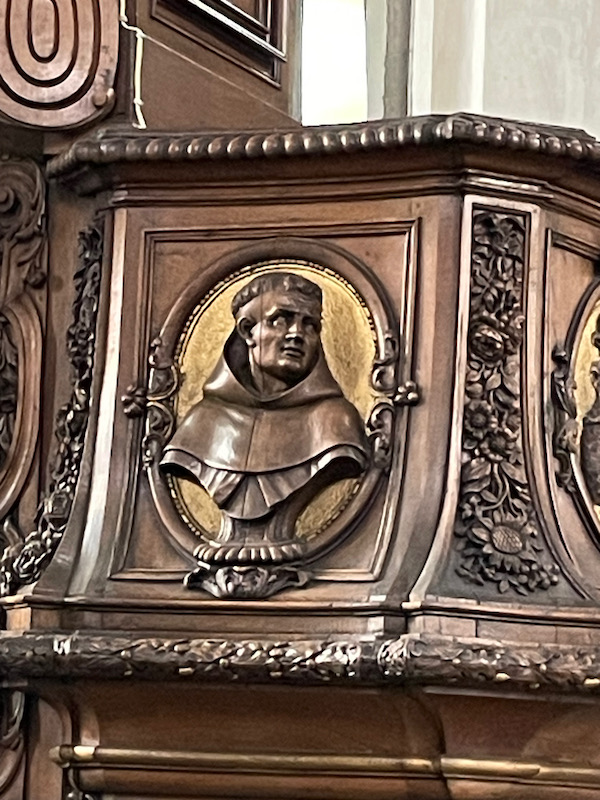
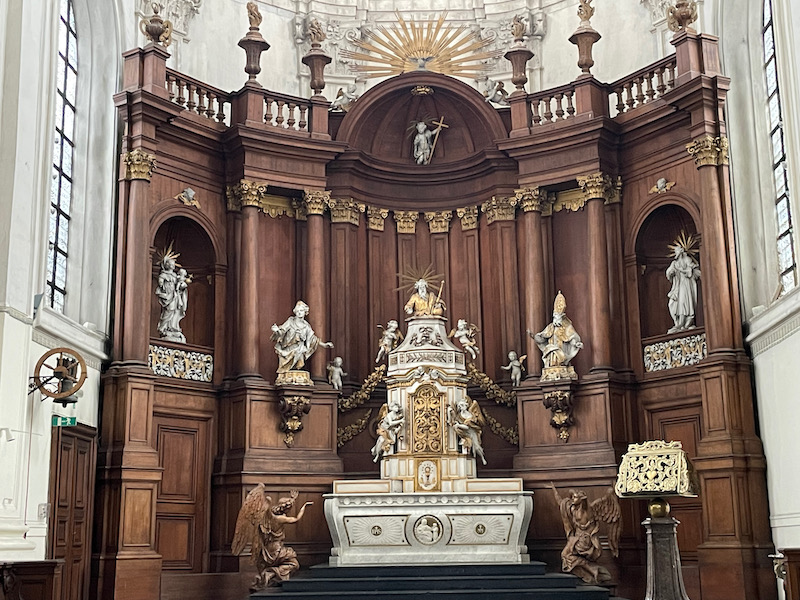
The 18th-century stalls were moved here from a former convent.

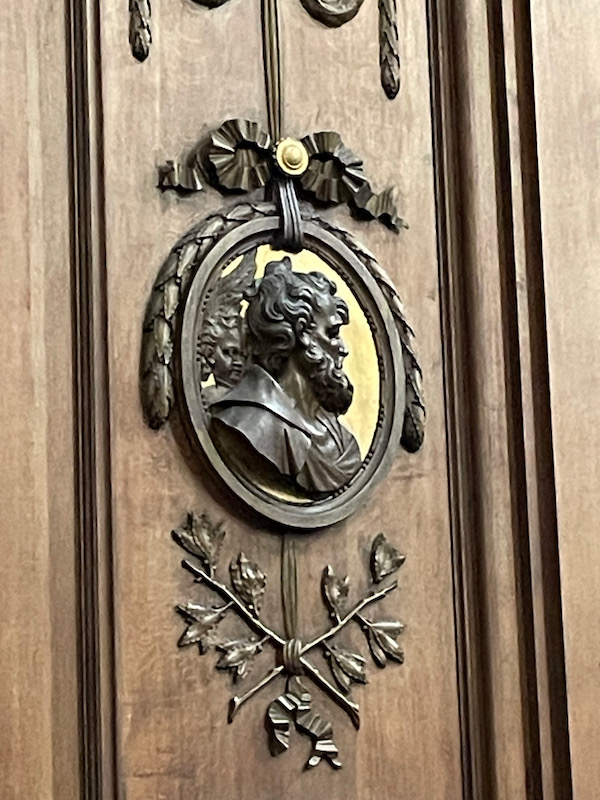
And a few stained-glass windows to finish.
